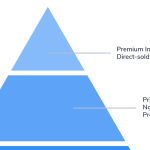
Choosing Between DCO and A/B Testing: Navigating Complexities
- Post
- August 9, 2023
- Ad Serving Tech, DCO vs A/B Testing, Dynamic Creative Optimization
- 0 Comments
In the ever-evolving landscape of digital marketing, staying ahead requires precision and adaptability. The ongoing debate between Dynamic Creative Optimization (DCO) and A/B testing has ignited discussions among marketers worldwide. As we delve into the intricacies of these strategies, we’ll uncover their nuances, benefits, and real-world implications, allowing you to make an informed decision tailored to your marketing goals.
Understanding DCO and A/B Testing
DCO: Crafting Personalized Experiences
Dynamic Creative Optimization (DCO) embodies the synergy of data-driven personalization and creativity. Unlike static creative, DCO tailors ad elements such as images, copy, and calls-to-action to individual users, maximizing relevance. This fluidity boosts engagement, click-through rates, and ultimately, conversions. DCO thrives on real-time data, presenting the most compelling version of an ad to each viewer.
A/B Testing: Unveiling Incremental Improvements
A/B testing, on the other hand, is the cornerstone of optimization. It involves comparing two versions of an ad (A and B) to determine which performs better. This method provides a scientific approach to refining your creatives, allowing you to make incremental improvements backed by solid data. It’s a structured way to test hypotheses and optimize elements like headlines, visuals, and CTAs.
When to Choose DCO
Personalization at Scale
DCO shines in scenarios where hyper-personalization is key. If your target audience is diverse and you need to deliver tailored messages efficiently, DCO is your ally. It harnesses user behavior data to serve personalized content, nurturing deeper connections and resonance.
Dynamic Situations
In industries with rapidly changing inventory or offerings, DCO maintains relevancy. Imagine an e-commerce platform with thousands of products – DCO ensures each user sees products relevant to their preferences and browsing history.
Multivariate Complexity
When your creatives involve multiple variables like images, headlines, descriptions, and CTAs, DCO can effortlessly manage this complexity. It optimizes each element to create the most impactful combination, elevating your campaign’s effectiveness.
When to Opt for A/B Testing
Gradual Iterative Refinement
A/B testing thrives in the world of gradual improvements. If you seek a methodical approach to enhancing your creatives, this is your path. By testing and comparing specific elements, you gain valuable insights into what resonates best with your audience.
Clear Isolation of Variables
When you want to understand the impact of individual changes in isolation, A/B testing excels. It allows you to pinpoint which specific modification led to the observed improvement, aiding strategic decision-making.
Limited Data Availability
In situations where real-time data might be scarce, A/B testing offers a reliable framework. It doesn’t rely heavily on immediate data inputs, making it suitable for scenarios where gathering sufficient data might take time.
Examples: DCO vs A/B Testing
DCO in Action
Imagine a travel website promoting vacation packages. With DCO, the website dynamically showcases tailored visuals of beach getaways to users who recently searched for beach destinations, while highlighting mountain retreats to those exploring colder locations. This personalized touch enhances the user experience and increases the likelihood of conversion.
A/B Testing Success
An e-commerce giant is revamping its checkout page. By using A/B testing, they test two versions of the new layout: one with a simplified form and the other with an extended form requesting additional information. Through meticulous analysis of conversion rates, they discover that the simplified form generates significantly higher conversions, leading to a permanent change.
Final Words
In the dynamic realm of digital marketing, there is no one-size-fits-all approach. DCO and A/B testing each offer unique advantages, making them powerful tools in your arsenal. Consider your campaign goals, audience, and available resources when making your choice.
Commonly Asked Questions
Q1. Can DCO be effective for small businesses with limited data?
Absolutely. DCO can still be valuable for small businesses by leveraging available user behavior data, even if it’s not as extensive as that of larger enterprises.
Q2. How do I decide which elements to A/B test?
Start with elements that have the potential to make a substantial impact, such as headlines, visuals, or CTAs. Prioritize changes based on your campaign’s objectives.
Q3. Is there a scenario where DCO and A/B testing can complement each other?
Certainly. Using DCO to deliver personalized content while simultaneously conducting A/B tests can provide deeper insights into how personalization impacts specific elements of your creatives.
Q4. Is DCO suitable for evergreen campaigns or only for short-term promotions?
DCO is versatile and can be effective for both evergreen and short-term campaigns. It adapts to the nature of your campaign and ensures content remains relevant.
Q5. How can I measure the success of my DCO campaign?
Key performance indicators (KPIs) such as engagement rates, click-through rates, and conversion rates are vital metrics to gauge the success of your DCO campaign.



